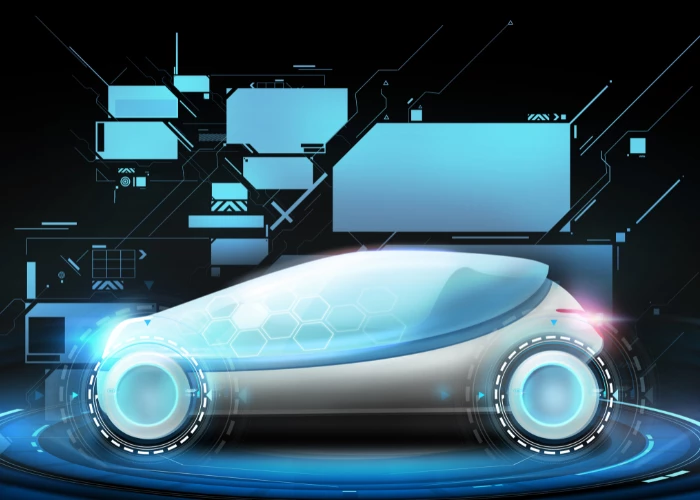Cost engineering in the disruptive era of Connected, Autonomous, Shared and Electric mobility
Add bookmarkIn his prophetic 2015 presentation, "Confessions of a Capital Junkie", Sergio Marchionne, the then-CEO of Fiat Chrysler Automobiles warned that the industry was plowing too much of its capital into disruptive technologies with little hope of short-term profits.
The risks, he argued, would only grow as manufacturers scrambled to meet emissions and safety regulations and keep pace with connectivity, electrification and autonomous technologies.
Four years later and much of what concerned him is coming to pass, with manufacturers across the globe suffering significant knocks to their bottom line profits.
While the situation might be serious, the automotive industry is not unaccustomed to costing pressures. After all people such as Jose Ignacio Lopez, who, in 1992 saved GM $1.1 billion on the company’s annual purchasing bill, rose to fame on the back of saving costs.
Moving on 25 years, and the emphasis has shifted from an often unpopular cost-cutting regimen to one of value-added cost engineering to contain and even reduce costs in an age where the electronic, electrical and software content of the average car is on the rise.
Cost engineering in a disrupted automotive industry
Activity-based costing, theory of constraints, feature-based costing, parametric costing and analogy are typical cost estimating and control techniques designed to provide more relevant information for evaluating the economic consequences of resource allocation decisions.
However, as the industry grapples with revolutionary new technologies driving Connectivity, Automation, Shared mobility and Electrification (CASE), for which very little historic data is available, a new approach is needed.
While cost engineering is an important element in any automotive development program, almost all the literature on costs of future technologies has focused on large civil engineering projects or low-volume aerospace ventures, since these industries often rely on previously-developed estimates to win new contracts.
For instance, the Jet Propulsion Laboratory in the United States developed a new parametric costing model for future space projects that requires very little historical data, as this traditional approach failed to produce accurate estimates on which to base budgets.
Faced with rapidly evolving technologies, similar to the automotive industry, the construction industry has turned to cost modelling that relies on statistical and artificial neural network methods in the conceptual product design phase to predict the lifecycle cost.
What's more, to enhance the accuracy of project cost estimation the industry is turning to new techniques such as principal component regression, web-based conventional cost estimates and evolutionary fuzzy neural inference modelling.
These project cost estimation methods have been categorized into five groups, based on the intelligent technique that is used in each group:
- machine-learning
- knowledge-based systems
- evolutionary systems
- agent-based systems
- hybrid systems
Agent-based systems are deemed to be one of the main pathways in applying artificial intelligence, by simulating the actions and interactions of autonomous agents with a view of assessing their impact on the system as a whole.
These techniques, using AI, are also finding application in the cost engineering of software systems.
Cost engineering aimed at software
As discussed earlier, cost engineering has always relied heavily on extensive historical data and engineering skills to accurately forecast costs and subsequent cost optimization. In the software world where ‘black-box,’ self-learning AI and data fusion is becoming commonplace, this becomes increasingly more difficult to establish.
In a research paper titled Software Project Cost Estimation using AI techniques, Rodríguez Montequí et al describe a method for software cost estimation that uses AI to identify the most significant factors and variables influencing the cost.
Since software costs are dominated by the cost of the human resources, measured in man-months, the project cost estimation is determined by the amount of time needed to accomplish the task, taking into consideration the organizational restrictions.
In the past, because of the complexity and variety of factors influencing the accuracy of the cost estimation, it has been common to use analytical models that take into consideration all significant inputs.
However, with the onset of the AI revolution new approaches are being adopted: Fuzzy Logic, Generic Algorithms and Neural Networks are all finding a place in optimizing costs during automotive software development.
These new modelling techniques enable the selection of the most significant variables and representative datasets. Additionally, the use of AI algorithms allow for the efficient processing of large amounts of data.
Nevertheless, in an environment where historical data is severely limited, it may be difficult to establish enough data points for AI to accurately forecast an outcome – for this reason the research paper describes a method of data analysis, modelling and optimization based on mining data using a historical dataset of more than 2000 projects recorded by the International Software Benchmarking Standards Group (ISBSG).
On the other hand, for automotive companies that do not have access to an extensive historical database or costing skills, but still wish to implement cost engineering in a hurry, there are several ready-made services such as the one offered by PA Perfect Cost Grid.
Automotive cost engineering as a service
The improvement in benchmarking capabilities in the automotive industry has had a significant impact on cost engineering. However, only a few manufacturers have been able to commit the additional resources and investment required to take advantage of these techniques.
Recognizing the potential of a web-based benchmarking and cost-engineering platform for the automotive industry, PA Perfect Cost Grid has developed a solution that offers purchasing, cost engineering and development staff, online access to the model costing results they need to develop competitively priced products. By so doing, companies are able to achieve significant savings in product costs while minimizing investment.
Focused on evaluating models in the C-segment in 2013, the company increased the scope to include small vans and D-segment cars in 2014. The database, which is created by stripping and analyzing selected vehicles to calculate the cost of all major parts and systems, remains relevant through continuous updates.
The costing and benchmarking database lets interested parties compare technical and commercial solutions of comparable systems, components and parts, while giving insights into product descriptions and bills of material backed up with visual documentation such as photos and drawings.
The solution offers customers the following:
- Online calculations of product cost, tooling cost and development cost for specific parts, components and systems which can be selected using the pre-loaded Bill-of-Material structure
- Expanded cost reduction and benchmarking activities, supported by an experienced team with the skills required to benchmark and reduce costs across products in series production or during development
In the face of increased R&D costs and shrinking margins, cost engineering, once seen as a means to squeeze extra profit, has evolved into a discipline vital for continued profitability and survival of manufacturers in the automotive industry.

























